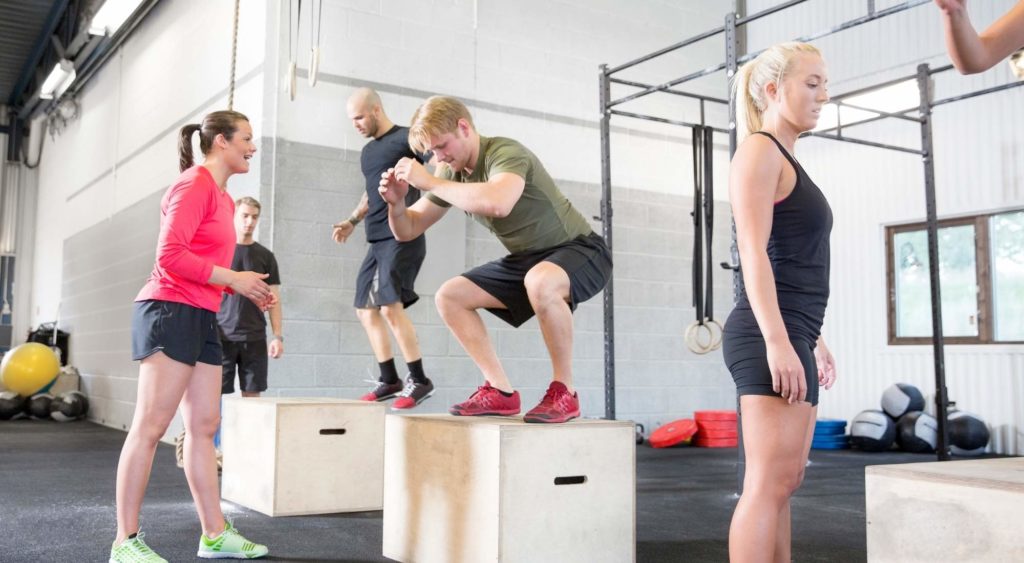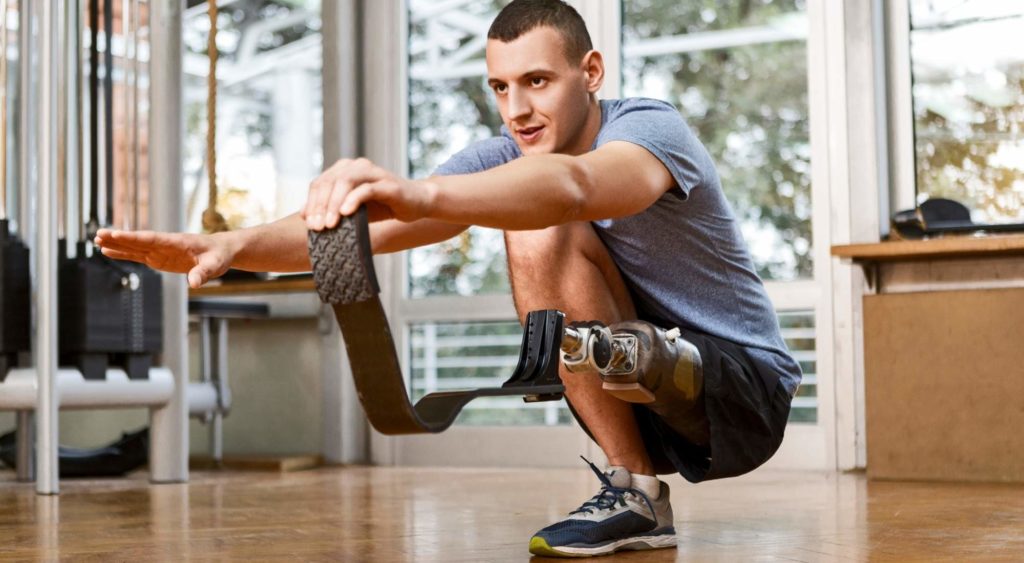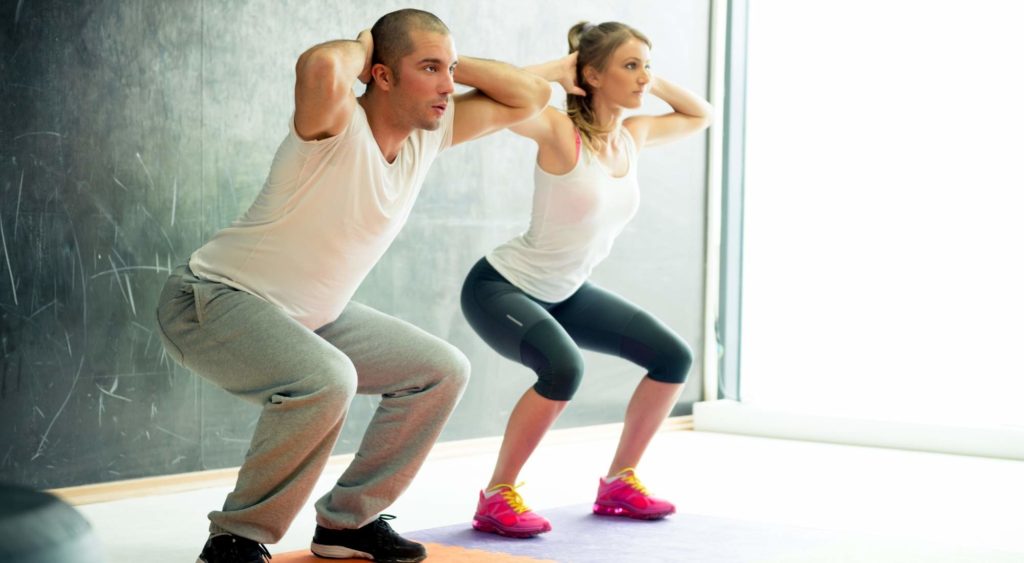
If you had a penny for every squat you’ve done.
Seriously, they must number well into the thousands.
But you recently heard a rumor that allowing your knees to extend past your toes while doing a squat could increase your chances of injury. Is it fact or fiction?
Have you been doing your squats wrong all this time?
Should your knees go over your toes when squatting or not?
This guide has the answers to all your questions regarding squatting technique, myths, and more.
Table of Contents
- Benefits of Doing Squats
- Should Your Knees Go Over Your Toes When Squatting
- Is Squatting With Your Knees Past Your Toes Safe?
- Where the Myth “Knees Over Toes is a No-Go” Started
- There’s No “One-Size-Fits-All” Technique to Squats
- Why You SHOULD Be Able to Bend Your Knees Past Your Toes During a Squat
- Squat Technique: Knees Aren’t the Only Things That Matter. 3 Things You Should Focus On
- Top 4 Squat Variations
- Ready to Hit Your Fitness Goals? Let In Motion O.C. Help You Feel Your Best
Benefits of Doing Squats
As an athlete, you are plenty familiar with squats.
But, have you ever wondered why squats are so important?
Let’s take a look at some perks of doing squats:
- Squats can be done anywhere and require only a minimum amount of space.
- They are a perfect exercise for strengthening your core muscles.
- Doing squats can help reduce your risk of injury.
- Squats are a quick way to burn calories.
- They are great for strengthening the muscles in your hamstrings, glutes, and quads.
- Doing squats can improve your flexibility, balance, and mobility.
While squats come in various shapes and sizes, there are some guidelines you will want to follow, regardless of the type of squat you’re doing:
- Get in the proper position, with your feet slightly wider than your hips.
- Point your toes out just a bit and pretend your feet are super-glued to the floor.
- Keep your chest up and your spine in a neutral position.
- Focus your eyes on a point straight ahead of you, rather than looking at the ceiling or floor.
- Keep your whole body tight and your core engaged throughout the entire squat.
- Continue squatting until you reach “parallel,” where your hip joint is slightly lower than your knees.
- Drive your knees outward as you stand and finish strong.
Should Your Knees Go Over Your Toes When Squatting?
Back to the question about proper knee position during squats.
Should you be doing knees over toes squats vs. knees behind toes squats?
Or is it best to do squats with your knees past your toes?
The truth is, there is not a black and white answer.
It is not necessarily a bad thing if your knees go past your toes when you are doing squats, but knee-placement does depend on a few factors such as:
- Your body type,
- How flexible you are,
- The strength of your knees, and
- The workout you are doing.
Is Squatting With Your Knees Past Your Toes Safe?
According to Greg Everett, Head Coach of the USA Weightlifting National Championship Team, the answer is, “Yes.”
Of course, you will want to be sure to gauge the placement of your knees according to the factors mentioned above.
Loaded vs. Unloaded Squats—The Difference Matters
Squats can either be done loaded (with weights) or unloaded (using only the natural weight of your body).
Your knee position during squats with weights will be different from your knee position when you are doing bodyweight squats.

Where the Myth “Knees Over Toes is a No-Go” Started
So where did all the controversy regarding knee position during squats originate?
The “knees over toes” myth got its start in 1961 when Dr. Karl Kline, from the University of Texas, published a study entitled, “The deep squat exercise as utilized in weight training for athletes and its effects on the ligaments of the knee.”
After comparing weightlifters with a control group, Dr. Klein came to the conclusion that deep squats caused a loosening of the ligaments in the knee as determined by the use of a device that he designed.
His study resulted in a bunch of speculation, very little research, and a myth that continues today.
There’s No “One-Size-Fits-All” Technique to Squats
If you think about it, deep squatting is a very natural position for the human body.
Consider these two scenarios:
- An unborn baby is in a deep squat position for the majority of their time in their mother’s womb.
- The deep squatting position is very commonly used by people of all ages in many traditional societies worldwide.
But because everyone is different, there is no standard way to properly do a squat.
Your form when doing squats will depend on:
- Your personal fitness goals,
- Your flexibility, and
- The type of workout you are doing: loaded squats vs. unloaded squats.
Why You SHOULD Be Able to Bend Your Knees Past Your Toes During a Squat
Unless they have issues with flexibility in their ankles or knees, a healthy athlete should have no problem performing a squat with their knees past their toes.
If you experience difficulty in comfortably extending beyond knees over toes during squats, In Motion O.C. can help.
Our physical therapists and trainers have the skills it takes to help you overcome any hip or knee issues that might be keeping you from performing up to your optimum capabilities.
We take the time needed to create a personalized workout routine to meet your individual needs and fitness goals.
Squat Technique: Knees Aren’t the Only Things That Matters. 3 Things You Should Focus On
People tend to get overly focused on knee position when doing squats.
But in order to safely do squats, there are a variety of other factors that need to be considered.
Posture
The goal of doing a squat is to strengthen your body, but you want to be sure to avoid injuring yourself in the process.
Having the correct posture when doing any type of squat is of key importance when it comes to preventing injury.
Take time before you start exercising to make sure that you have your feet in the proper position, about shoulder-width apart.
Keeping your back straight will also help to ensure that you are properly executing each exercise.
Balance
Do you find that you are a little wobbly when doing your squats?
If so, you will want to spend time learning how to properly balance your weight.
It is helpful to master bodyweight squats before advancing to squats involving additional weights.
If you’re finding it tricky to maintain your balance while doing squats, try holding onto a chair as you do your repetitions.
Practice using slow, controlled movements while keeping your weight centered on your heels, as opposed to the balls of your feet.
Avoid Putting Too Much Stress on Your Knees
We have all heard of athletes who injure their knees while doing squats.
What can you do to protect your knees while you’re doing squats?
Once again, you will want to be sure to use the proper form.
If an athlete moves from the ankles first when doing a squat, it causes their knees to hinge forward.
When this happens, their body weight is placed onto the balls of their feet, in what is known as the “knees first” approach.
This type of movement puts too much pressure on the knee joints and can contribute to an increased risk of injury.
When you’re doing squats, your weight should be centered on your heels with your feet flat on the floor.
Top 4 Squat Variations
Squats come in all shapes and sizes.
You will want to choose the type of squats you do based on:
- The area of the body you are wanting to strengthen,
- Your exercise experience, and
- The type of equipment you have on hand.
Here are some of the most popular squat variations:
#1: Bodyweight Squats
Bodyweight squats are especially good for athletes who are new to the squatting game.
Bodyweight squats:
- Are a great strengthening exercise for your lower body,
- Do not require any equipment,
- Can be performed just about anywhere,
- Are great for High Intensity Interval Training or HIIT training, and
- Work all the major muscles in your lower body, including your quads, glutes, hamstrings, and core.
When doing a bodyweight squat, it is no problem at all if your knees go slightly in front of your toes.
You will want to think of your knees as a hinge and take care that you do not allow them to collapse inwards.
While collapsing your knees might allow you to do a super-low squat, you will also be putting a ton of unnecessary pressure and stress on your knees, which can increase the possibility of injury.
Bodyweight workouts overall are a great place to begin exercising.
Get in touch with us at In Motion O.C. and let us create the perfect workout routine for your fitness needs.

#2: Goblet Squats
Goblet squats are also referred to as kettlebell squats.
While goblet squats mainly work an athlete’s hamstrings and quads, they are also a superb workout for strengthening the:
- Core,
- Glutes,
- Calves,
- Arms,
- Grip-strength,
- As well as a variety of other stabilizer muscles.
Choose heavy weights for your goblet squats if you are wanting to focus on strength training and lighter weights if you are wanting to get in a more cardio-focused workout.
And when doing a goblet squat, knees past toes is perfectly normal.
#3: Barbell Front Squats
A barbell front squat is a more advanced exercise that requires a good amount of experience, strength, and mobility in order to perform correctly.
Used to target the lower body, the barbell front squat places less pressure on the spine while making the quads do the majority of the heavy lifting.
And as with bodyweight and goblet squats, when doing the barbell front squat technique, knees should be extended beyond the toes.
#4: Back Squats
What comes to your mind when you think of Olympic weightlifting?
If you’re like many people, you may very well picture back squats.
Not only is it one of the most commonly used squats, but the back squat is also one of the most effective exercises for those wanting to strengthen the lower body.
This squat focuses mainly on the glutes, hamstrings, and spinal erectors.
It’s also very popular among bodybuilders because it does a great job of building lower body mass.
Ready to Hit Your Fitness Goals? Let In Motion O.C. Help You Feel Your Best
Whether you are wanting to:
- Up your squatting game,
- Make a comeback after an injury,
- Begin an exercise routine, or
- Improve your overall health,
… the experts at In Motion O.C. are ready to help you reach your personal fitness goals.
Take control of your health and get in touch with us today for your free consultation.



